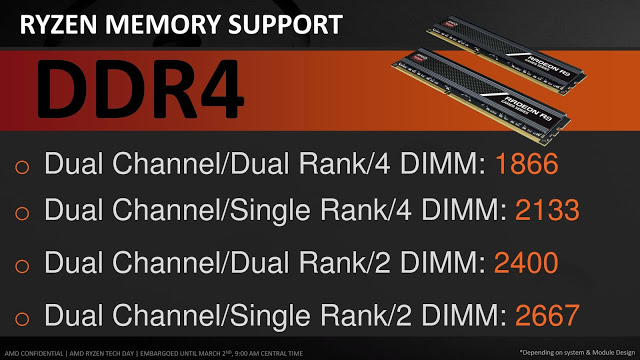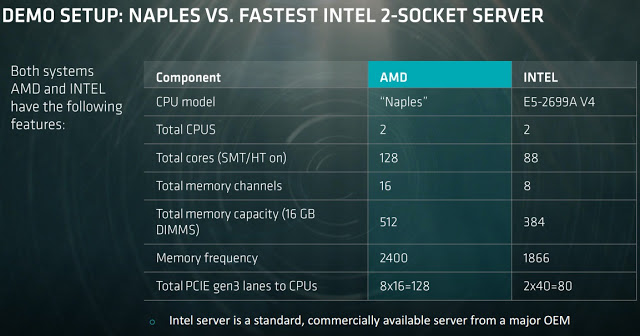AMD’s new Ryzen processor has definitely succeeded in grabbing eyeballs after its launch due to the sheer brilliance of its power and capability. So far AMD has been a tough contender to all the intel’s best of processors including the recently rolled out Naples. The entire architecture of AMD’s Ryzen looks absolutely brilliant and runs smoothly when it comes to desktops. One of the first processors by AMD that uses the Zen architecture, Ryzen would be redefining the desktop processing in the near future.
While the Zen architecture is amply lauded across the industry for its multi-threaded approach to resolving heavy-duty job scheduling and processing aspect. As per the industry reports, that also concur with the reports released by the company itself, Ryzen has obviously scored high in terms of the various industry benchmarks for CPU. Moreover it has performed better than some of the best processors that have been put forward by Intel so far. Hence it will not be an exaggeration to say that AMD has pretty much made the long awaited comeback into the desktop processing. The demonstrations on the newly launched processor unit clears shows that AMD has certainly put some sweat into furnishing the perfect core design and paid attention to the overall functioning of the processing unit in heavy workload conditions.
The Zen micro architecture has surely been one of the major USP of the chipset but there are also a lot of other nuances to the processor that makes it truly invincible for desktop applications. With the chipsets such as Naples and Ryzen coming onto the fore around the same time, it is almost impossible not to draw a comparison between the two, especially when both the processor units look so promising with regard to their feature set and capabilities in real life scenario.
AMD’s Naples is one of the two-socket server chip that also has the much talked about, Zen architecture. Broadly speaking both Naples and Ryzen are based on Intel’s heavy weight chip such as Broadwell-EP and Kaby Lake silicon. The feature set even though remains almost the same, the numbers seemed to have been tweaked up a bit so as to enable the processing units to be deployed in applications such as for data centers or enterprise servers that see heavy amount of processing demands on a regular basis.
AMD’s Naples comes with as many as 32 cores which makes every aspect of multi-threading processing possible and seamless. For instance, AMD’s Naples comes with a 32-core and 64 thread architecture which when compared to Intel’s best, Xeon E5-2669 V4 that has 22-core architecture gives the former a clear advantage in terms of thread count. Also the bandwidth and the memory channel provided by Naples are surely a head and shoulders above what is being provided by other contenders. The PCI Express high-speed IO connectivity also enables the processor a higher memory channel at point of time leading to effective usage of the memory element within and at the periphery.
On the other hand, AMD’s Ryzen packs a 8 core, 16 thread architecture which to be honest is effective for most of the desktop applications save the ones that need a monumentally high level of processing such as in case of operations in most enterprises. Ideal for being used in as a standalone system on a desktop-like condition, ryzen brings the best of desktop computing and Zen architecture to the fore. It comes with a complex AI framework that supports learning on the fly using a built in neural network inside the processor. All this encompasses that as the CPU is used with a certain kind of application, the processor can actually train itself to perform certain routine aspects of the entire operation quiet swiftly using neural network. The power efficiency of the processor is worth a mention as it surpasses those of several top end processors.
AMD’s Ryzen comes with man integrated sensors on board that would enable the system to monitor a lot of parameters that were not possible to be monitored before. Another interesting fact about the Ryzen processing unit is the fact it can automatically over clock itself any kind of cooling condition so as to deliver peak performance whenever needed. This particular aspect has brought forth several questions regarding the efficiency of the unit in the long run but as per the manufacturer, the processor comes with ample capability to clock itself down to the optimal level based on the operational demands. The various desktop variants of the Ryzen processor that will be rolled out for the desktops, would consists of L2 and L3 cache memory that would at the tune of 4MB to 16 MB which is definitely going to spur up the overall speed of the processor to a huge extent.
Summary-
Ryzen was launched targeting the desktops and that is where it would need to perform well and as luck would have it does a lot of heavy lifting task in terms of overall throughput even when used in server architecture.



